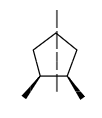
How to find which compound is dextro and laevo rotatory from its structure?
Answer
430.2k+ views
1 likes
Hint: If an organic compound is asymmetric and consists of at least one chiral carbon, then that compound is known as an optically active compound. The major conditions for a compound to be optically active are:
-There should be no plane of symmetry or centre of symmetry in the compound.
-The compound must have a chiral plane.
Complete answer:
When a compound is optically active, then it has the ability to rotate the plane of polarized light to two directions i.e., either left or right.
In general, ordinary light is formed from electromagnetic waves of different wavelength whereas the monochromatic light consists of only one wavelength. Plane of polarized light is an example of monochromatic light. Therefore, the compounds which are asymmetrical in nature, can rotate the plane of polarized light.
Dextro-rotatory compound: The compounds which rotate the plane of polarized light to the right or clockwise, then it is said to be dextro-rotatory.
Laevo-rotatory compound: The compound which rotates the plane of polarized light to the left or anticlockwise, then it is said to be laevo-rotatory.
An example for dextro and laevo rotatory compounds is given below:

Note:
If a compound that has a chiral carbon but consists of a plane of symmetry or centre of symmetry, then it is known as a meso compound. These compounds are optically inactive but they can have absolute configuration for the chiral carbon present in the compound.
Example for meso compound is given below.

-There should be no plane of symmetry or centre of symmetry in the compound.
-The compound must have a chiral plane.
Complete answer:
When a compound is optically active, then it has the ability to rotate the plane of polarized light to two directions i.e., either left or right.
In general, ordinary light is formed from electromagnetic waves of different wavelength whereas the monochromatic light consists of only one wavelength. Plane of polarized light is an example of monochromatic light. Therefore, the compounds which are asymmetrical in nature, can rotate the plane of polarized light.
Dextro-rotatory compound: The compounds which rotate the plane of polarized light to the right or clockwise, then it is said to be dextro-rotatory.
Laevo-rotatory compound: The compound which rotates the plane of polarized light to the left or anticlockwise, then it is said to be laevo-rotatory.
An example for dextro and laevo rotatory compounds is given below:

Note:
If a compound that has a chiral carbon but consists of a plane of symmetry or centre of symmetry, then it is known as a meso compound. These compounds are optically inactive but they can have absolute configuration for the chiral carbon present in the compound.
Example for meso compound is given below.

Latest Vedantu courses for you
Grade 11 Science PCM | CBSE | SCHOOL | English
CBSE (2025-26)
School Full course for CBSE students
₹41,848 per year
Recently Updated Pages
Master Class 9 General Knowledge: Engaging Questions & Answers for Success

Master Class 9 English: Engaging Questions & Answers for Success

Master Class 9 Science: Engaging Questions & Answers for Success

Master Class 9 Social Science: Engaging Questions & Answers for Success

Master Class 9 Maths: Engaging Questions & Answers for Success

Class 9 Question and Answer - Your Ultimate Solutions Guide

Trending doubts
Give 10 examples of unisexual and bisexual flowers

Draw a labelled sketch of the human eye class 12 physics CBSE

Differentiate between homogeneous and heterogeneous class 12 chemistry CBSE

Differentiate between insitu conservation and exsitu class 12 biology CBSE

What are the major means of transport Explain each class 12 social science CBSE

a Tabulate the differences in the characteristics of class 12 chemistry CBSE




